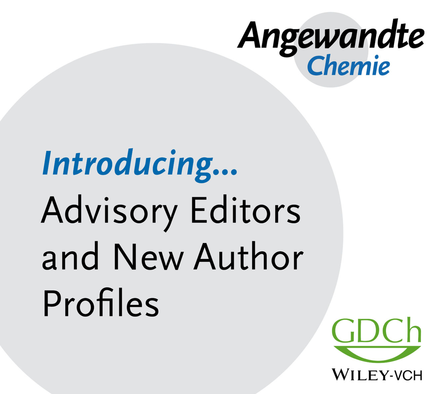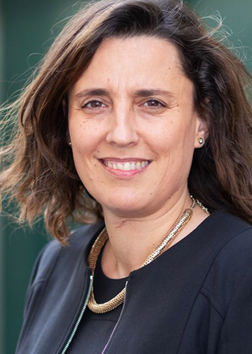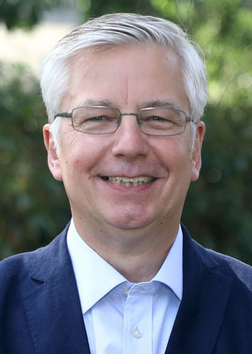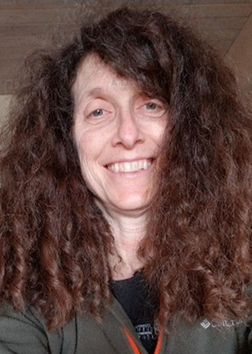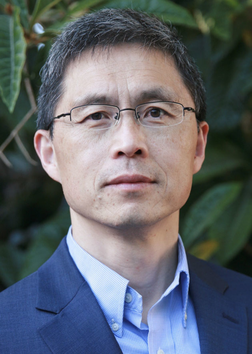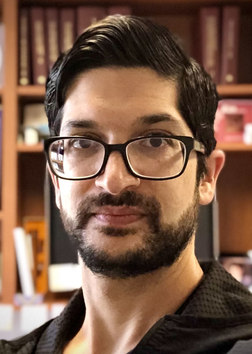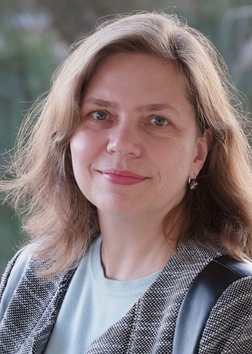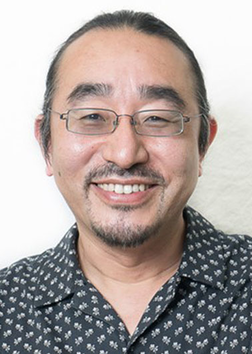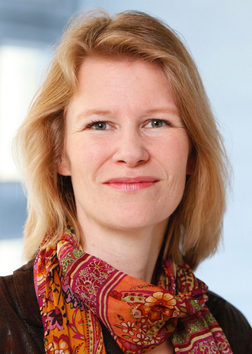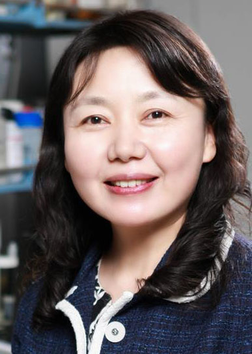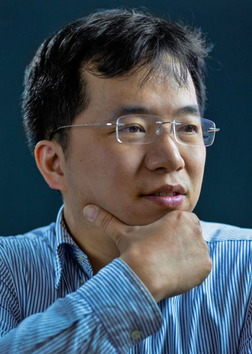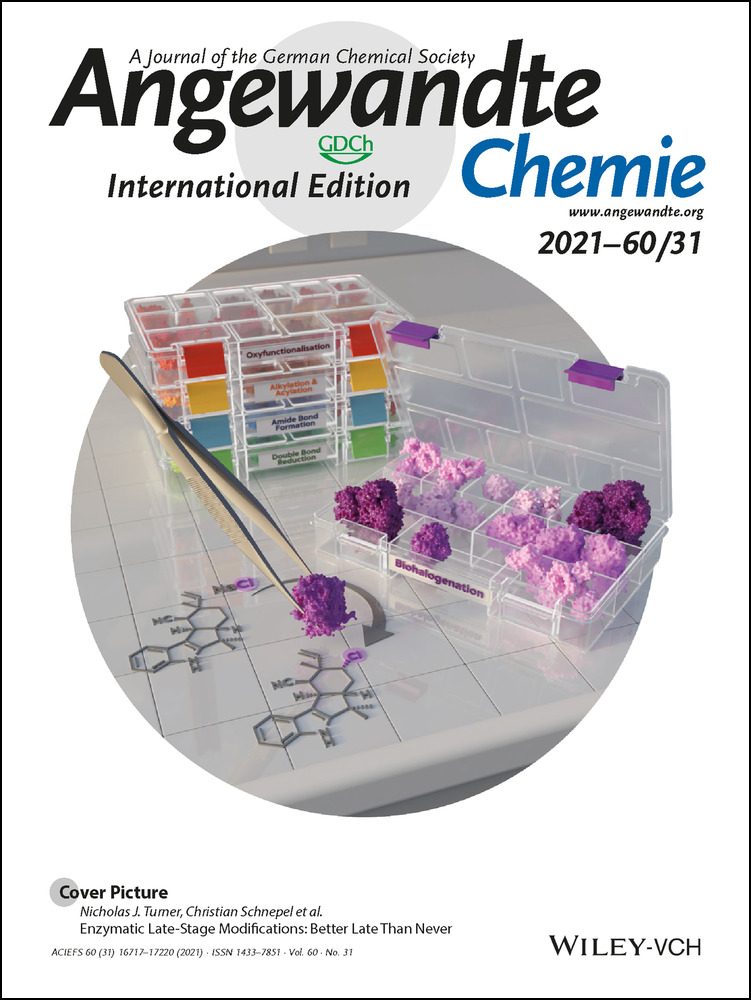Introducing… Advisory Editors and New Author Profiles at Angewandte Chemie
Graphical Abstract
One year ago, Angewandte Chemie pledged to become a more inclusive and diverse journal. We have made significant progress, but our work is not done. Starting today with the inaugural ten Advisory Editors of the journal and our new Author Profiles “Introducing…”, and continuing over the next several months, we are pleased to share our achievements so far and our plans for the future.
The past year has been extraordinary. A deadly pandemic has swept the globe, changing the daily lives of billions around the world. Everyone has been affected, but in different ways and to different extents depending on their individual circumstances. These disparities, among other factors, have brought renewed attention in many countries to questions of diversity, equity, and inclusion (DE&I).
One year ago, Angewandte Chemie pledged to become a more inclusive and diverse journal. Since then, we have been working hard to make change happen.1, 2 We have made significant progress, but our work is not done. Starting today, and continuing over the next several months, we are pleased to share our achievements so far and our plans for the future.
The authors of this Editorial have been meeting on a monthly basis as members of the Angewandte Chemie Council, which was established by the Board of the German Chemical Society (GDCh) in autumn 2020 to oversee the operational success and strategic development of the journal. Strategic decisions are made by the four voting members of the Council, which include the Chair of Angewandte′s International Advisory Board (A.G.B.-S.), the GDCh President (P.R.S.), the GDCh Board Representative for Publisher Relations (K.L.), and the GDCh Executive Director (W.K.). The Council provides a robust structure for systematic alignment and constructive cooperation between the GDCh and the Executive Editors of Angewandte Chemie.
One of the pledges we made in June 2020 was to focus on building more diversity within the Editorial and Advisory Boards of the journal. We are delighted to introduce the inaugural group of Advisory Editors (see box), who together constitute the Scientific Advisory Committee. They form the closest connection between the scientific community and the journal, and they will help shape the scientific profile of Angewandte Chemie and provide input on editorial strategy, with the aim of fostering and expanding the leading role of the journal in the field and maintaining the scientific excellence of all published content. The Advisory Editors are active scientists and will bring their perspective and experience “at the bench” into decision-making processes at the journal. They will closely interact with the in-house editorial team in a collaborative process that will combine the strengths of both editorial roles. The Advisory Editors will be involved in difficult decisions and appeals, and they will provide direct scientific insight into ethical cases of, for example, data fabrication and fraud, should they arise.
The new International Advisory Board is currently being assembled and will be announced in the coming weeks. It will play a key role in helping us hear different voices in the community more clearly, with representation from industry and academia, early career and established researchers from around the world.
We also pledged to develop new editorial guidelines incorporating DE&I principles. We have adopted practices that expand our reviewer pool and decrease the potential for bias, for example by considering diversity among those invited to review any given paper. We have revised our procedures for appeals and shared the new process transparently (Appeals Policy). Angewandte Chemie editors were instrumental in developing Wiley's new author name change policy (New Author Name Change Policy), which makes it easy for authors to change their name on published research at their own discretion. The journal has fully implemented this policy, and authors are already making use of it.
A year ago, we discontinued the author profiles and news sections of the journal, recognizing that they did not reflect the variety of success stories across the chemistry community. We are now launching a new type of profile focusing on first-time corresponding authors in the journal. With hundreds of such authors a year, there are many new faces to celebrate. Unfortunately, we are not able to highlight everyone, but we celebrate the diversity of the chemistry community by featuring individuals from different backgrounds and subdisciplines. The profiles give insight into personal and professional aspects of the highlighted author, while also shifting the focus from the individual corresponding author to the team that contributed to the work. Papers published in Angewandte Chemie rarely result from the efforts of a single person! We would love to hear your feedback and suggestions as we continue to reshape these sections to promote equity and inclusion.
We have made progress toward our pledge to become more inclusive and diverse, but there is more to be done. The journal serves a global community of scientists and is part of the system by which science advances. We are committed to doing our part to making that system work for everyone and to encouraging others to work with us towards change. In the next few months, we will share other changes we have made and how we will continue to build on them in the future.
Biographical Information
Leticia González was born in Madrid, where she studied Chemistry and obtained her PhD working with Otilia Mó and Manuel Yáñez at the Universidad Autónoma de Madrid. She moved to the Free University of Berlin in 1999 and obtained her Habilitation and venia legendi in 2004, mentored by Jörn Manz. She was appointed Professor at the Friedrich-Schiller-University of Jena in 2007 and full Professor at the University of Vienna in 2011. She is a theoretical and computational chemist with world-known expertise in the calculation of electronic excited states and its nuclear dynamics. Her research includes modelling photophysical, photochemical and photobiological processes. She is interested in light-driven processes on organic dyes, DNA, coordination compounds, among others, with diverse applications, ranging from solar fuels to medicine.
Biographical Information
Walter Leitner (FRSC) is Director at the Max Planck Institute for Chemical Energy Conversion in Mülheim an der Ruhr and holds the Chair of Chemical Technology and Petrochemistry at RWTH Aachen University. He is also Scientific Director of CAT, the joint Catalytic Center of RWTH Aachen and the company Covestro. His research focusses on an organometallic approach to catalysis motivated by the principles of Green Chemistry. The research efforts of his team have been recognized with several distinctions including most recently the Georg Wittig–Victor Grignard Prize by the Société Chimique de France (2020). His collaboration with Dr. Christoph Gürtler (Covestro) to bring catalytic process utilizing CO2 from science to application has led to nominations among the finalists for the Deutsche Zukunftspreis (2019) and the European Inventor Award (2021).
Biographical Information
May Nyman has a multidisciplinary education with a BSc in Geology, an MSc in Materials Science and Engineering, and a PhD in Inorganic Materials Chemistry. She worked at Sandia National Laboratories in Albuquerque, New Mexico from 1998–2012 in the environmental and energy sectors. One of her defining accomplishments is the discovery and development of a new family of materials known as heteropolyniobates; of interest for catalytic nerve agent degradation, and understanding fundamental ion-pairing in aqueous media. From 2012 to present, she has been a professor in the Department of Chemistry at Oregon State University. May's group has established internationally recognized expertise in X-ray scattering and solution speciation of metal-oxo clusters, thin film materials, ion separations and catalysis, polyoxometalate chemistry and actinide chemistry. May has also focused on seeking career-defining and empowering internships and fellowships for her graduate students and promoting advancement of under-represented minorities in STEM.
Biographical Information
Jianghong Rao obtained his PhD in chemistry from Harvard University in 1999 for research on oligomeric derivatives of vancomycin under the supervision of George M. Whitesides. Following a Damon Runyon Cancer Research Foundation postdoctoral fellowship with Roger Y. Tsien at University of California, San Diego, he joined the Department of Molecular and Medical Pharmacology at University of California, Los Angeles as an Assistant Professor in 2002. In 2004 he moved to Stanford University School of Medicine where he is Professor of Radiology and Chemistry (by courtesy) and a faculty fellow of Stanford ChEM-H. His research areas include chemical biology, molecular imaging and sensing, bionanotechnology, biomaterials, and cancer theranostics.
Biographical Information
Ryan Shenvi was born and raised in Wilmington, Delaware. He earned his PhD in 2008 at The Scripps Research Institute, where he also began his independent career in 2010 and earned tenure in 2014. From 2015 to 2021, he was the primary caretaker of four children while his wife undertook residency and the support of rural hospitals. Ryan's lab develops new chemistry to quickly access natural product chemical space and collaborates with biological labs to explore function.
Biographical Information
Martina Stenzel studied chemistry at the University of Bayreuth, Germany, before completing her PhD in 1999 at the Institute of Applied Macromolecular Chemistry, University of Stuttgart, Germany. After her PhD, she moved to the University of New South Wales (UNSW), Sydney, Australia, initially as a postdoctoral fellow, then as lecturer, before she was promoted to full Professor in 2012. Martina is interested in the design of new polymeric materials for biomedical applications with a focus on polymers for drug delivery.
Biographical Information
Hiroaki Suga is a Professor in the Department of Chemistry, Graduate School of Science in the University of Tokyo. He received a Ph.D. at MIT (1994) followed by a post-doctoral fellowship at Massachusetts General Hospital (1997). He was Assistant and tenured Associate Professor at the State University of New York, University at Buffalo (1997–2003) and Professor at the Research Center for Advanced Science and Technology at the University of Tokyo (2003–2010). He has had his present position since 2010. He is the recipient of Akabori Memorial Award 2014, Max-Bergmann Medal 2016, Nagoya Medal Silver 2017, Vincent du Vigneaud Award 2019, Bohlmann Lecture 2019 and The Research Award of the Alexander von Humboldt Foundation 2020.
Biographical Information
Helma Wennemers is an organic chemist whose research focuses on asymmetric catalysis, chemical biology, and supramolecular chemistry. She studied chemistry at the Goethe-University Frankfurt, received her PhD degree from Columbia University, New York and did postdoctoral studies at Nagoya University before joining Basel University as the Bachem-endowed Assistant Professor. In the fall of 2011, she moved to ETH Zurich where she is Professor of Organic Chemistry. Her research has been recognized by numerous named lectureships and awards, including the Leonidas Zervas Award from the European Peptide Society (2010), the Inhoffen Medal from the Helmholtz Center (2017), the Pedler Award from the Royal Society of Chemistry (2016), the Netherlands Scholar Award for Supramolecular Chemistry (2019), and the Arthur C. Cope Scholar Award from the ACS (2021).
Biographical Information
Li-Zhu Wu received her B.S. degree in chemistry from Lanzhou University in 1990 and her Ph.D. degree from the Institute of Photographic Chemistry, the Chinese Academy of Sciences, under the supervision of Professor Chen-Ho Tung in 1995. From 1995–1998, she worked at the Institute of Photographic Chemistry as an Associate Professor. After a postdoctoral stay (1997–1998) at the University of Hong Kong working with Professor Chi-Ming Che, she returned to the Technical Institute of Physics and Chemistry, the Chinese Academy of Sciences, as a full professor. In 2019, Li-Zhu Wu was elected as a member of the Chinese Academy of Sciences. Her research interests are focused on photochemical conversion, including artificial photosynthesis, visible light catalysis for organic transformation, and photoinduced electron transfer, energy transfer and chemical reactions in supramolecular systems.
Biographical Information
Qiang Zhang graduated from Tsinghua University, P. R. China, in 2004, where he continued doing research on carbon nanomaterials and obtained his PhD in chemical engineering in 2009. He subsequently held Research Associate/Postdoc Research Fellow positions at Case Western Reserve University, USA, and the Fritz Haber Institute of the Max Planck Society, Germany. Now he is a professor at the Chemical Engineering Department, Tsinghua University, China. He held the Newton Advanced Fellowship from Royal Society, UK and the National Science Fund for Distinguished Young Scholars. He was awarded the Zhaowu Tian award from the International Society of Electrochemistry, Science and Technology Award for Chinese Youth, and First Prize of Natural Science of Ministry of Education. His current research interests are advanced energy chemistry and energy materials, including dendrite-free lithium metal anodes, lithium sulfur batteries, and energy electrocatalysis, especially the structure design and full demonstration of advanced energy materials in working devices.



